_
|
PERSONNEL |
|
|
|
Notable personnel of the 318th fis |
|
|
|
BRIGADIER GENERAL DENNIS B. SULLIVAN |
|
|
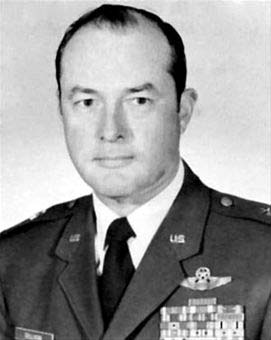 |
|
|
F-106 Pilot
(1961 - 1963) |
|
|
|
|
|
biography |
|
|
|
Brigadier General Dennis B. Sullivan is a command director in
the Cheyenne Mountain Complex for the North American Aerospace
Defense Command, headquartered at Peterson Air Force Base,
Colo.
General Sullivan was born in 1927, in Chippewa
Falls, Wis., where he graduated from McDonell High School in
1944. In 1946 he entered the U.S. Naval Academy at Annapolis,
Md., graduating in 1950 with a bachelor of science degree and
a commission as a second lieutenant in the U.S. Air Force. He
received a master's degree in international affairs from The
George Washington University, Washington, D.C., and is a
graduate of the Advanced Management Program for Executives,
Carnegie-Mellon University in Pittsburgh; the Air Command and
Staff College at Maxwell Air Force Base, Ala., and the
National War College, Fort Lesley J. McNair, Washington, D.C.
His initial pilot training began in June 1950 in T-6s
at Randolph Air Force Base, Texas, and continued in F-80s at
Williams Air Force Base, Ariz., and Nellis Air Force Base,
Nev.
In January 1952 General Sullivan was assigned to
the 80th Fighter-Bomber Squadron, 8th Fighter-Bomber Wing in
South Korea, where he flew 100 combat missions in F-80s. After
completing his tour of duty in South Korea, he transferred to
Truax Field, Wis., and flew F-86 Sabrejets and F-102 Delta
Daggers with the 126th, 432nd and 323rd Fighter-Interceptor
squadrons. In October 1957 he moved with the 323rd
Fighter-Interceptor Squadron to Harmon Air Force Base,
Newfoundland, where he continued flying F-102s until September
1960. Following graduation from the Air Command and Staff
College in July 1961, General Sullivan
served with the 318th Fighter-Interceptor Squadron at McChord
Air Force Base, Wash., flying F-106s.
From June
1963 to August 1968, General Sullivan was a special projects
officer at Headquarters U.S. Air Force, Washington, D.C. He
was then assigned to Headquarters Aerospace Defense Command,
Ent Air Force Base, Colo., as chief, Test Branch, Weapons
Division. He attended the National War College and
concurrently earned his master's degree in international
affairs from The George Washington University from August 1969
to August 1970.
General Sullivan served from August
1970 to August 1972 as director of operations and later vice
commander of the 9th Strategic Reconnaissance Wing at Beale
Air Force Base, Calif., the only Air Force unit flying the
SR-71 "Blackbird" strategic reconnaissance aircraft. He then
moved to Air Training Command as vice commander of Chanute
Technical Training Center, Chanute Air Force Base, Ill., where
he served for three years.
In July 1975 General
Sullivan took command of the only navigator training wing in
the Air Force, the 323rd Flying Training Wing at Mather Air
Force Base, Calif. From September 1976 to July 1978, he was
assigned as deputy chief of staff for operations at Air
Training Command headquarters, Randolph Air Force Base. In
this position he was responsible for monitoring and providing
staff support to pilot, navigator and survival training
programs at 11 bases and several detachments. He then took
command of 12th Air Division at Dyess Air Force Base, Texas,
and assumed his present duties in September 1981.
General Sullivan is a member of the Society of Experimental
Test Pilots and a command pilot with 7,000 hours flying
experience. His military decorations and awards include the
Legion of Merit with one oak leaf cluster, Distinguished
Flying Cross with oak leaf cluster, Meritorious Service Medal
and Air Medal with two oak leaf clusters.
He was
promoted to brigadier general Feb. 1, 1977, with date of rank
Jan. 24, 1977. Brigadier General Sullivan retired from the Air
Force on March 1, 1983.
|
|
|
| |
|
Operation BLACK SHIELD |
|
|
|
Call sign "DUTCH 23" |
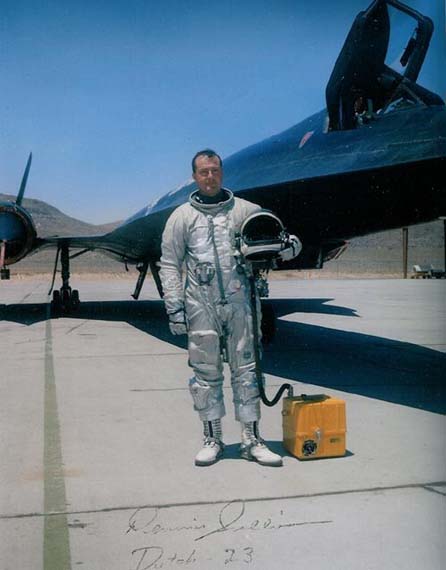 |
1129th SAS (Special Activities Squadron)
Groom Lake "Area 51", Nevada
director of operations
and later vice commander
9th Strategic Reconnaissance Wing
(August 1970 to August 1972) |
|
|
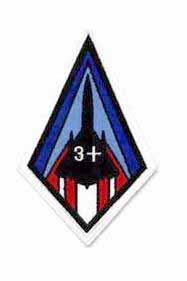 |
|
|
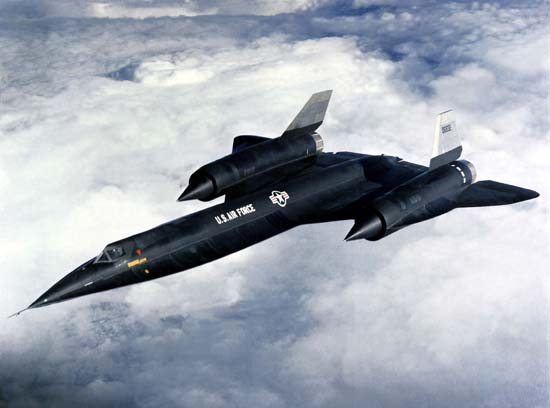 |
|
As serving as a special projects officer at Headquarters
U.S. Air Force, in Washington, D.C., General Sullivan flew 3
missions in OPERATION BLACK SHEILD.
|
|
|
|
OPERATION BLACK SHIELD |
|
|
|
The A-12 Blackbirds, flown by CIA pilots were the first to
operate out of Kadena AB, Okinawa in 1967. The unit was deployed from
the 1129th SAS (Special Activities Squadron) out of Groom Lake "Area
51", Nevada. They were also known as "The Road Runners".
The 1129th SAS was a joint USAF/CIA Operation
On 17 May 1967, the first Blackbird support components were
airlifted to the island. The mission was called "Black Shield" and was
formally sanctioned by President Johnson. The first A12 Article #131
arrived at Kadena on May 22 after a 6 hour, 6 minute flight from Groom
Lake, Nevada. A second A12 Article #127 arrived on May 24th and the
third aircraft, Article #129 arrived on May 27th after a delay due to
INS problems at Wake Island. The Oxcart Detachment unit, with 260
personnel and under the command of Colonel Hugh Slater was declared
operationally ready on 29 May 1967. The Black Shield team received
authorization for it's first Operational Mission the following day.
-On 31 May 1967, Mel Vojvodich (CIA) flew A12 #937 out of
Kadena on the First Operational Black Shield Mission. Over North Vietnam
and the DMZ, the A12 photographed 70 of the known 190 SAM missile sites.
The flight lasted 3 hours and 39 minutes and was flown at Mach 3.1 and
an altitude of 80,000 feet.
-From 31 May to 15 August, 1967 seven more Black Shield
Missions were flown over North Vietnam. In a typical A12 mission the
Blackbird was over the target area for only twelve minutes. However,
with a Mach 3 turn radius of 86 miles, intrusion into China airspace was
carefully avoided. The photo film package was processed at an Air Force
Center in Japan and was delivered to Vietnam Commanders within 24 hours
of the Black Shield flight and shortly thereafter to the President of
the United States.
-Between 15 August and 31 December, 1967 fifteen Black Shield
Missions were flown.
-Between 01 January and 31 March 1968, six missions were flown:
four over North Vietnam and two over North Korea. The first flight over
North Korea was flown on January 26th by Frank Murray (CIA) to assess
the seizure of the USS Pueblo by North Korean gunboats. A-12
reconnaissance aircraft based from Kadena Air Base, Japan were
dispatched to survey North Korea to determine where the Pueblo was being
held. The first mission over North Korea on 25 January was aborted due
to a malfunction, but on the second mission On January 26, the A-12
photographed the Pueblo being held 11 miles north of Wonson harbor.
-On 08 May 1968, Jack Layton (CIA) flew one mission over North
Korea. It was to be the last operational mission flown by the CIA on
Okinawa. The SR-71 was prepared to take over mission responsibilities.
The SR-71's began arriving in March of 1968. There was an overlap of
approximately 90 days in the phase out of the A12's from Kadena.
-On June 04, 1968, an A12 piloted by Jack Weeks (CIA) took off
from Kadena for a functional check flight due to an engine change. He
was last heard from 520 miles East of Manila, Philippines. Investigation
revealed no clue as to the disappearance of the A12 and pilot Jack
Weeks. It remains a mystery to this day.
-During June of 1968 the A12's flew back to Groom Lake Test
Facility and all 15 A12's were placed in storage at Palmdale, Plant 10,
California.
-On 21 June 1968, pilot Frank Murray (CIA) flew #131 on the
final A12 flight to Palmdale. The entire A12 program lasted 10 years..
from 1957-1968. A total of 29 Operational Sorties were flown out of
Kadena. They remained in storage for a decade and then distributed to
various museums in the United States.
-On 26 June 1968, The CIA Intelligence Star for Valor was
awarded to CIA Pilots: Mel Vojvodich; Jack Layton; Frank Murray, Ken
Collins and Dennis Sullivan. The posthumous award to Jack Weeks was
accepted by his widow.
The CIA Legion of Merit was presented to the Oxcart Detachment
Commander Colonel Hugh "Slip" Slater and his Deputy Colonel Amundson.
The Air Force Outstanding Unit Award was also presented to Detachment
Oxcart members of the 1129th SAS
|
|
|
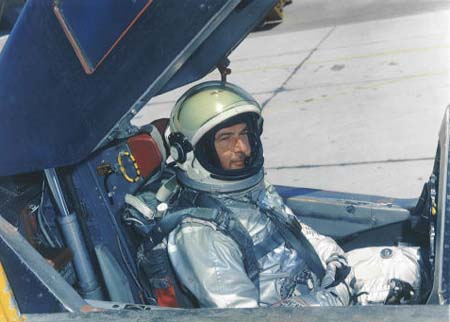 |
|
Sullivan in the cockpit of a A-12. |
|
|
|
-
BX6709 131 19 July 1967 Mission was flown at Mach 3.17 and 82,000 feet
for a duration of 4:58 hours.
-
BX6732 131 28 October 1967 Mission was flown at Mach 3.15 and 83,500
feet for a duration of 3:49 hours.
- BX6734 129 30 October 1967 Mission was flown at Mach 3.20 and 85,000
feet for a duration of 3:44 hours.
During a flight on 30 October 1967, pilot Dennis Sullivan detected radar
tracking on his first pass over North Vietnam. Two sites prepared to
launch missiles but neither did. During the second pass at least six
missiles were fired at the OXCART, each confirmed by missile vapor
trails on mission photography. Sullivan saw these vapor trails and
witnessed three missile detonations. Post-flight inspection of the
aircraft revealed that a piece of metal had penetrated the lower right
wing fillet area and lodged against the support structure of the wing
tank. The fragment was not a warhead pellet but may have been a part of
the debris from one of the missile detonations observed by the pilot.
|
|
|
|
|
 |
|